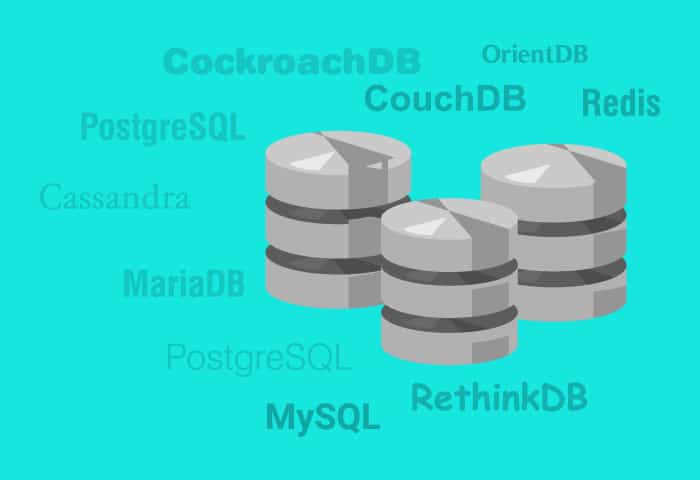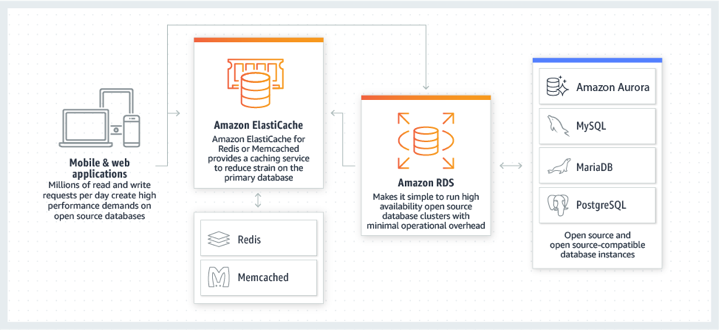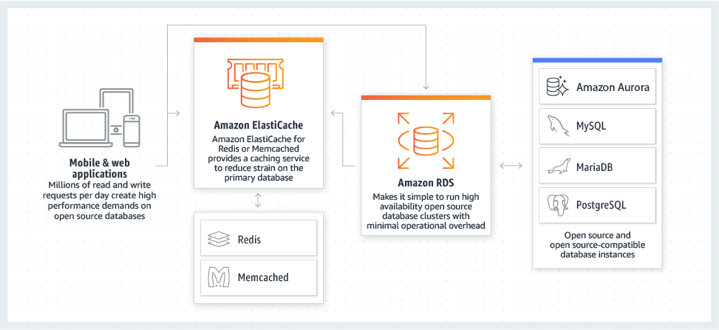IBM Apache Team Open Source Database Deep Dive
IBM Apache team on open source database explores IBM’s deep involvement in open-source databases, focusing on their collaborative projects with the Apache Software Foundation. This exploration delves into the historical context, current offerings, and future trends shaping the open-source database landscape. The analysis includes technical specifications, security considerations, and the vibrant community surrounding these initiatives.
The article examines IBM’s strategies, highlighting their contributions to Apache projects and the impact on the overall open-source ecosystem. It contrasts IBM’s approach with that of other key players, providing a comprehensive overview of the strengths, weaknesses, and opportunities in this dynamic sector.
IBM’s Open Source Database Initiative

IBM has a long and evolving relationship with open source, and its database offerings are a prime example. From early contributions to various projects to its current active participation in open-source communities, IBM’s strategy reflects a commitment to collaborative development and innovation. This approach allows IBM to leverage the strengths of the open-source model while maintaining its own expertise and competitive edge.IBM’s commitment to open source extends beyond simply licensing its technologies under open-source licenses.
It involves active participation in communities, fostering collaboration, and ensuring the long-term health and viability of the projects it supports. This collaborative model is crucial for the advancement of open-source databases, and IBM plays a significant role in its success.
Historical Overview of IBM’s Involvement
IBM’s involvement in open source databases spans several decades. Early on, IBM contributed to projects like PostgreSQL, making significant technical contributions that improved the database’s performance and functionality. This involvement demonstrates IBM’s recognition of the value of open-source technologies and its commitment to collaborative development. Subsequent contributions and partnerships with various open-source communities have further solidified IBM’s position as a key player in the open-source database landscape.
Current Open Source Database Offerings
IBM currently offers a portfolio of open-source database technologies. This includes contributions to projects like Apache Derby, which is a Java-based embedded database, and contributions to other projects in the Apache ecosystem. Furthermore, IBM actively promotes and supports other open-source databases, recognizing the value they bring to various industries and applications. These contributions are part of a broader strategy to leverage the power of open source to enhance its database solutions and broaden its market reach.
IBM’s Strategies for Contributing and Promoting
IBM’s strategies for contributing to and promoting open-source databases involve multiple facets. One key aspect is providing technical expertise and resources to open-source communities. This includes contributing code, participating in discussions, and addressing community needs. Additionally, IBM frequently shares its knowledge through educational materials, workshops, and conferences, further fostering a supportive environment for open-source database development and adoption.
These efforts are aimed at building a strong community around these technologies and ensuring their ongoing success.
IBM’s Apache team is making some serious waves in the open-source database world. Their innovative work is really pushing the boundaries, but the recent news about Network Associates denying a Microsoft acquisition rumor is also quite interesting. This sort of tech-related speculation often gets thrown around, but in the bigger picture, it’s all part of the exciting ecosystem surrounding open-source database development.
It seems like the IBM Apache team is making significant strides, and that’s certainly something to watch closely. Network Associates denies Microsoft acquisition rumor highlights the often-turbulent tech landscape, and ultimately, all this activity reinforces the importance of the IBM Apache team’s ongoing contributions to open-source databases.
Comparison with Other Major Players
Compared to other major players in the open-source database market, IBM’s approach stands out in its comprehensive strategy. While other companies may focus on specific projects or technologies, IBM’s strategy encompasses a wider range of open-source database projects, encompassing different use cases and levels of integration. This broader approach allows IBM to address a wider range of customer needs and market demands.
Moreover, IBM’s focus on community building and knowledge sharing further distinguishes its engagement with open-source databases.
IBM’s Open Source Database Projects
| Project | Features | Target Use Cases |
|---|---|---|
| Apache Derby | Java-based embedded database, lightweight, suitable for applications requiring a fast and efficient local database. | Mobile applications, desktop applications, embedded systems where a full-fledged database is not necessary. |
| PostgreSQL | Object-relational database management system (ORDBMS), known for its scalability, reliability, and extensibility. | Large-scale applications, data warehousing, analytical applications, demanding environments requiring robust performance. |
| Other Apache Projects | Various other projects within the Apache ecosystem, each with specific strengths and capabilities. | Specific needs based on the project in question, ranging from cloud deployments to enterprise-level solutions. |
Apache Database Projects
The Apache Software Foundation hosts a rich ecosystem of open-source database projects, catering to diverse needs and technical requirements. These projects leverage the collaborative spirit of the open-source community, offering robust, reliable, and often highly performant database solutions. Understanding these projects and their strengths and weaknesses is crucial for anyone considering an open-source database solution.These projects span various database types, from columnar to document stores and graph databases.
Each project is built with specific strengths and weaknesses, impacting performance, scalability, and feature sets. This exploration will dive into the technical details of key Apache database projects, offering insights into their architectures, design patterns, and practical applications.
Key Apache Database Projects
Apache database projects represent a wide spectrum of database technologies, from traditional relational databases to more specialized solutions. Understanding the key projects is essential to appreciate the breadth and depth of the Apache ecosystem. The most prominent projects include Apache Cassandra, Apache Derby, Apache HBase, Apache Hive, Apache Kafka, Apache Kudu, Apache Lucene, Apache Phoenix, Apache Pinot, and Apache Trino.
Technical Aspects of Apache Database Projects
Apache Cassandra, a distributed NoSQL database, excels in handling massive datasets and high write throughput. Its architecture is built on a distributed, fault-tolerant design, utilizing a wide range of data replication and partitioning strategies. Apache Derby is a Java-based embedded relational database, often used for in-application or testing purposes. Its lightweight design allows for rapid development but may not be suitable for high-throughput production environments.
Apache HBase is a scalable, distributed, column-oriented database built on top of Hadoop, designed for large-scale data storage and retrieval. Apache Hive is a data warehouse system built on Hadoop, enabling data summarization, query, and analysis. Apache Kafka, though not strictly a database, is a high-throughput distributed streaming platform. It’s critical for real-time data pipelines, often integrated with other databases.
Apache Kudu is a column-oriented storage system for Hadoop, enhancing query performance over large datasets. Apache Lucene is a full-text search engine library, crucial for indexing and querying text-based data. Apache Phoenix is a SQL layer over HBase, enabling SQL queries on HBase data. Apache Pinot is a column-oriented database optimized for analytics queries, providing high performance and scalability.
Apache Trino is a distributed SQL query engine for big data, enabling analysis and querying of data residing in various data sources.
Strengths and Weaknesses of Apache Database Projects
Each Apache database project possesses unique characteristics, leading to distinct strengths and weaknesses. Cassandra excels in high availability and write performance, but complex queries might be less efficient. Derby offers ease of use for simple applications but struggles with large datasets. HBase is a powerful option for large-scale data storage but requires familiarity with the underlying Hadoop ecosystem.
Hive offers flexibility for data warehousing but may not be the fastest option for real-time analysis. Kafka is ideal for streaming data but isn’t a full-fledged database for persistent storage. Kudu enhances query performance for Hadoop-based systems, but may not be the best choice for other architectures. Lucene is excellent for full-text searches but needs integration with other systems. Phoenix provides a familiar SQL interface for HBase, improving developer productivity, but still relies on the underlying HBase architecture.
Pinot excels at analytical queries on large datasets, but its strength is less applicable to transactional use cases. Trino offers a versatile SQL interface for diverse data sources, but it’s crucial to understand the characteristics of the data sources.
Architecture and Design Patterns in Apache Databases
The architectural choices made in Apache databases significantly influence their performance and scalability. Cassandra employs a distributed key-value store architecture with a wide range of replication strategies, ensuring high availability. Derby is a traditional relational database with a Java-based implementation, offering a simpler architecture. HBase builds upon Hadoop’s distributed file system and MapReduce framework. Hive utilizes Hadoop for storage and processing, making it a scalable data warehouse system.
Kafka’s architecture is designed for high-throughput streaming data, with message queues and distributed topics. Kudu employs columnar storage to accelerate queries, leveraging the strengths of column-oriented databases. Lucene’s inverted index structure enables efficient full-text searches. Phoenix leverages HBase’s distributed architecture. Pinot’s columnar storage and optimized query processing mechanisms enhance query performance.
IBM’s Apache team on open-source databases is doing fantastic work, pushing the boundaries of what’s possible with these technologies. However, as we move beyond the traditional reliance on biometrics, new strategies for security, like those explored in beyond biometrics new strategies for security , are becoming increasingly important. Ultimately, robust security is key, and the innovations coming from the open-source database world are essential to keep pace with these evolving needs.
Trino’s distributed query engine architecture allows for scaling across multiple nodes.
Comparison of Apache Database Projects
| Project | Performance | Scalability | Features |
|---|---|---|---|
| Apache Cassandra | High write throughput, low read latency | Excellent, horizontally scalable | Fault tolerance, wide range of data models |
| Apache Derby | Good for small datasets, moderate performance | Limited scalability | Simple, embedded relational database |
| Apache HBase | High write and read throughput, good for large datasets | Excellent, distributed | Scalable, column-oriented |
| Apache Hive | Moderate performance for complex queries | Scalable with Hadoop | Data warehousing, query engine |
| Apache Kafka | Extremely high throughput, low latency | Highly scalable, distributed | Real-time data streaming |
| Apache Kudu | High performance for queries | Excellent scalability, distributed | Column-oriented storage |
Collaboration between IBM and Apache
IBM’s deep involvement with the Apache Software Foundation underscores its commitment to open-source software, particularly in the database domain. This collaboration fosters innovation, accelerates development, and benefits the wider open-source community. IBM’s contributions have a demonstrable impact on Apache projects, driving advancements in database technology and expanding its reach.IBM’s participation in Apache projects extends beyond simple contributions; it embodies a strategic partnership that leverages the strengths of both organizations.
This collaboration significantly shapes the landscape of open-source databases, influencing the direction of development and attracting a wider pool of talent and resources.
Joint Efforts and Projects
IBM’s engagement with Apache database projects manifests in various forms. From code contributions and technical guidance to community engagement and mentorship, IBM actively participates in the development and maintenance of several Apache projects. This collaboration isn’t limited to one or two specific projects; it permeates the entire ecosystem, fostering a dynamic exchange of knowledge and resources.
Specific Examples of Collaboration
Several projects exemplify IBM’s involvement. A notable example is IBM’s significant contributions to Apache Kafka, particularly in the area of high-availability and fault tolerance. Another example showcases IBM’s active participation in the development of Apache Cassandra, contributing to its scalability and performance. IBM’s involvement with Apache Derby, a Java-based embedded database, also demonstrates the scope of this partnership.
Impact on the Open Source Database Landscape
This collaboration has significantly influenced the open-source database landscape. IBM’s contributions to Apache projects have led to more robust, scalable, and reliable database solutions. The adoption of these technologies by a broader community further enhances their practical application and widespread usage.
Benefits and Challenges for Both Organizations
For IBM, this collaboration provides access to a vast community of developers, leading to rapid innovation and increased adoption of its technologies. It allows IBM to leverage open-source expertise and contribute to the development of leading-edge solutions. Challenges for IBM might involve balancing proprietary interests with the open-source ethos. The potential for conflicts in priorities and methodologies between IBM’s commercial products and Apache projects needs careful management.For Apache, the collaboration with IBM brings in significant resources, expertise, and a strong developer base.
This collaboration accelerates development cycles, enhancing the quality and stability of Apache projects. A potential challenge for Apache could be ensuring the quality and consistency of contributions from different teams, maintaining the project’s open-source nature, and maintaining a balance in the project’s overall direction.
IBM’s Apache team on open source databases is fascinating, especially considering the potential for these tools to play a crucial role in organizing and accessing vast amounts of data. This aligns perfectly with the concepts explored in “the future of human knowledge the semantic web,” the future of human knowledge the semantic web , where interconnected data becomes a cornerstone for understanding.
Ultimately, these open source database initiatives are paving the way for a more interconnected and accessible future of information.
IBM’s Contributions to Apache Database Projects
| Apache Project | IBM Contribution | Impact on Development | Impact on Community Engagement |
|---|---|---|---|
| Apache Kafka | High-availability and fault tolerance improvements | Enhanced stability and reliability of the project, leading to more robust solutions. | Increased trust and confidence in the project, attracting new contributors and users. |
| Apache Cassandra | Contributions to scalability and performance | Improved the project’s ability to handle massive datasets and high throughput. | Demonstrated IBM’s commitment to open-source principles, fostering stronger community ties. |
| Apache Derby | Development and maintenance of the Java-based embedded database | Continued support and evolution of the project, crucial for Java developers. | Maintained a strong developer community around the project, supporting continued usage. |
Community Impact and Growth: Ibm Apache Team On Open Source Database
The open-source ecosystem thrives on active participation and collaboration. IBM’s and Apache’s database projects are no exception, relying on a vibrant community for innovation, problem-solving, and ongoing development. This dynamic community fosters a continuous cycle of improvement, knowledge sharing, and ultimately, the creation of robust and reliable database solutions.The strength of the community surrounding IBM’s and Apache’s open-source database projects lies in the interplay between contributors and users.
Contributors, often developers with expertise in specific areas, dedicate their time and skills to enhancing the projects, fixing bugs, and implementing new features. Users, meanwhile, provide crucial feedback, report issues, and leverage the database solutions for their own applications, shaping the direction and evolution of the project.
Contributor and User Roles
Contributors are the driving force behind the development and improvement of the open-source database projects. Their roles extend beyond coding; they also participate in design discussions, provide documentation, and engage in community forums. Users, on the other hand, are the ultimate beneficiaries and testers of these solutions. Their feedback, whether through bug reports or feature requests, is essential for the projects’ ongoing refinement and adaptation to real-world needs.
Support and Knowledge Sharing Mechanisms
Effective support and knowledge sharing are vital for maintaining a healthy community. Online forums, mailing lists, and dedicated support channels facilitate communication between contributors and users. These mechanisms provide a platform for troubleshooting issues, answering questions, and sharing best practices. Comprehensive documentation and well-maintained code repositories contribute significantly to the ease of onboarding new contributors and users.
Community Growth Trends
Several factors influence the growth and engagement of the community. Open-source projects often experience rapid growth when addressing emerging technological needs or when demonstrating demonstrable value in specific industry applications. The availability of compelling use cases and the success stories of users significantly impact the community’s enthusiasm and engagement.
Active Communities and Engagement Metrics
The following table provides a snapshot of active communities involved in specific Apache database projects, along with estimations of their size and engagement metrics. These figures are approximate and subject to change.
| Apache Database Project | Estimated Community Size | Engagement Metrics (e.g., Pull Requests/Month, Forum Posts/Week) |
|---|---|---|
| Apache Cassandra | > 10,000 active contributors and users | High, with significant pull requests and forum activity. |
| Apache Derby | > 5,000 active contributors and users | Moderate, with active discussion and support for existing features. |
| Apache Phoenix | > 2,000 active contributors and users | Moderate, with a focus on supporting specific use cases. |
Future Trends and Opportunities
The open-source database landscape is dynamic and constantly evolving. Emerging technologies, particularly cloud computing and artificial intelligence (AI), are reshaping the way databases are designed, deployed, and utilized. IBM and the Apache Software Foundation, through their collaborative efforts, are uniquely positioned to capitalize on these advancements and shape the future of open-source databases. This exploration will detail potential future trends, emerging technologies, opportunities for innovation, and challenges.
Potential Future Trends in Open Source Databases
The future of open-source databases is characterized by a move toward greater scalability, performance, and security. These advancements will enable a broader range of applications and use cases, particularly in areas like big data analytics and machine learning. Cloud-native architectures will become increasingly important, allowing databases to adapt to fluctuating resource demands. Decentralized and distributed database models will also gain prominence, offering increased resilience and fault tolerance.
Emerging Technologies Influencing the Space
Cloud computing is transforming database deployment and management. Open-source databases are becoming increasingly cloud-native, enabling seamless integration with cloud platforms. This integration allows for flexible scaling, reduced operational overhead, and cost-effectiveness. Artificial intelligence (AI) is another significant influencer. AI-powered tools can enhance database management tasks, such as query optimization, anomaly detection, and security.
For example, AI algorithms can automatically identify and resolve performance bottlenecks in real-time.
Potential Opportunities for Collaboration and Innovation
The collaborative relationship between IBM and the Apache Software Foundation presents numerous opportunities for innovation. This partnership can focus on developing new database features, optimizing performance for specific use cases, and improving security protocols. Joint research and development efforts can accelerate the pace of innovation, leading to more advanced and sophisticated database solutions. One specific area of potential innovation is the integration of AI into database management systems.
This could involve developing AI-driven query optimizers, automated security measures, and self-managing database clusters.
Potential Challenges and Considerations for the Future
While opportunities abound, potential challenges must be addressed. Maintaining compatibility across different database systems and versions can be complex. Security concerns will continue to be paramount, requiring robust security mechanisms to protect sensitive data. Ensuring data privacy and compliance with evolving regulations will also be a critical concern. Another challenge is keeping pace with the rapid advancement of cloud computing and AI technologies.
IBM and Apache must adapt to these changes, ensuring their database solutions remain relevant and effective in the evolving digital landscape.
How IBM and Apache are Positioning Themselves for Future Advancements
IBM’s commitment to open-source technologies, coupled with its deep expertise in database technologies, positions them to play a pivotal role in shaping the future of open-source databases. Their investments in open-source projects, such as Apache projects, and ongoing contributions to the community, demonstrate a long-term strategy. The Apache Software Foundation’s focus on fostering a vibrant community and promoting innovation through open-source collaboration is a key strength.
Their collaborative approach to development and support ensures that open-source databases are robust, secure, and adaptable to future needs. For example, their continued development of high-performance and scalable database solutions will enable new applications and services.
Technical Specifications and Implementations
IBM and Apache’s open-source database projects offer a diverse range of technical specifications and implementations, catering to various needs and deployment scenarios. Understanding these technical details is crucial for selecting the appropriate solution for a specific use case. From fundamental query languages to data models and supported features, this section delves into the specifics of these projects, illustrating practical applications and real-world deployments.The diverse implementations of these open-source databases allow for flexible configurations, accommodating different infrastructure requirements and scalability needs.
This flexibility enables organizations to adapt the database to their evolving needs, ensuring optimal performance and reliability.
Technical Specifications of IBM and Apache Open Source Databases
Various IBM and Apache open-source database projects utilize different underlying technologies and architectures, offering diverse features and capabilities. Each project has specific strengths that cater to distinct use cases, from transactional processing to analytical queries.
Query Languages Supported
The choice of query language significantly influences data interaction and manipulation. Different projects support different SQL dialects, or even alternative query languages, tailored for specific functionalities. This variety allows developers to select the language best suited to their needs. For instance, Apache Hive, often used for data warehousing, utilizes a SQL-like query language that is designed to simplify complex queries against large datasets.
Data Models and Structures, Ibm apache team on open source database
Data models employed by these open-source databases vary, each designed for different types of data and usage patterns. Relational models, often used for structured data, provide well-defined relationships between data elements. Other models, such as document models, are suitable for handling semi-structured or unstructured data, allowing flexibility in data representation.
Supported Features and Functionality
These databases offer a wide array of features, including security mechanisms, data integrity controls, and performance tuning options. These features cater to diverse requirements, enabling developers and administrators to ensure data accuracy, maintain data integrity, and optimize query performance. For instance, support for distributed transactions and replication mechanisms is critical for high availability and fault tolerance in production environments.
Deployment Options and Configurations
Deployment flexibility is a key advantage of open-source databases. These projects allow for various deployment configurations, including cloud-based, on-premises, and hybrid deployments. This adaptability enables organizations to choose the deployment model that best aligns with their infrastructure and operational requirements. For instance, IBM Db2 supports deployment on cloud platforms like AWS and Azure, alongside on-premises deployments.
Practical Use Cases and Implementations
These open-source databases are widely used in diverse industries and applications. Financial institutions leverage these databases for transaction processing, while e-commerce companies utilize them for managing customer data and product information. These databases also power analytics platforms, enabling organizations to extract insights from large datasets.
Real-World Examples of Production Deployments
Numerous organizations worldwide are successfully utilizing IBM and Apache open-source databases in production environments. For instance, a large retail company might employ Apache Cassandra for handling high-volume customer transactions, while another organization could use IBM Db2 for managing sensitive financial data.
Comparison of Technical Specifications
| Database Project | Query Language | Data Model | Supported Features |
|---|---|---|---|
| Apache Cassandra | CQL (Cassandra Query Language) | Wide-column store | High availability, scalability, fault tolerance |
| Apache Hive | SQL-like | Column-oriented | Data warehousing, querying large datasets |
| IBM Db2 | SQL | Relational | Transaction processing, data security, enterprise-grade features |
Security Considerations

Open source databases, like those developed by the Apache and IBM communities, offer significant advantages, but inherent security risks require careful attention. Robust security practices are paramount to maintaining data integrity and preventing unauthorized access. The collaborative nature of open source development necessitates a shared responsibility for maintaining security, which includes actively addressing vulnerabilities and promptly implementing patches.Security in open-source databases is a multifaceted concern that goes beyond the core database engine.
It encompasses the entire ecosystem, including client applications, network configurations, and operating system interactions. A holistic approach is crucial to mitigate risks and protect sensitive data.
Security Update Importance
Regular security updates and patches are essential for open-source database systems. These updates often address critical vulnerabilities that could be exploited by malicious actors. Failure to apply timely updates can leave systems exposed to potential attacks. For instance, a well-known security vulnerability in a database management system (DBMS) can lead to unauthorized access, data breaches, and significant financial losses for organizations.
Potential Vulnerabilities and Risks
Open-source databases, while generally secure, are susceptible to various vulnerabilities. These can arise from flaws in the code, misconfigurations, or inadequate security practices. Common vulnerabilities include SQL injection attacks, cross-site scripting (XSS), and insecure authentication mechanisms. Furthermore, the open nature of the codebase exposes potential vulnerabilities to reverse engineering and malicious modifications. Organizations using open-source databases must be aware of these vulnerabilities and take proactive steps to mitigate the risks.
Best Practices for Security
Maintaining the security of open-source databases requires a multi-layered approach. Implementing strong access controls, regularly auditing configurations, and using robust encryption mechanisms are critical. Furthermore, employing penetration testing and vulnerability scanning tools can identify and address potential weaknesses proactively. Regular training for database administrators and users on security best practices is also essential to enhance awareness and prevent human error.
Continuous monitoring and logging of database activities provide valuable insights into potential security incidents.
Security Measures, Vulnerabilities, and Mitigation Strategies
The following table Artikels security measures, vulnerabilities, and mitigation strategies for Apache and IBM open-source databases:
| Security Measure | Vulnerability | Mitigation Strategy |
|---|---|---|
| Regular Security Audits | SQL Injection | Parameterization of queries, input validation, and prepared statements. |
| Strong Authentication | Weak Passwords | Implementing multi-factor authentication (MFA), enforcing strong password policies, and regular password audits. |
| Secure Configuration | Insecure Default Configurations | Configuring the database with appropriate security settings, disabling unnecessary services, and implementing firewalls. |
| Data Encryption | Data Breaches | Using encryption at rest and in transit to protect sensitive data, utilizing robust encryption algorithms. |
| Regular Patching | Exploitable Vulnerabilities | Establishing a patching schedule and ensuring timely application of security updates. |
Final Thoughts
In conclusion, the IBM Apache team’s commitment to open-source databases is vital for innovation and progress in the industry. The collaboration between IBM and Apache fosters a rich ecosystem of development, community engagement, and ultimately, the evolution of powerful and secure database solutions. Future trends, including cloud computing and AI, are poised to significantly impact this landscape, creating exciting opportunities for both organizations.







